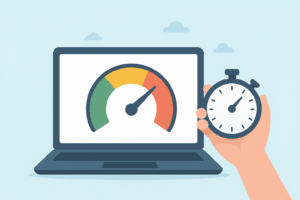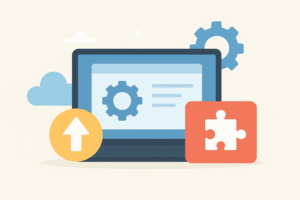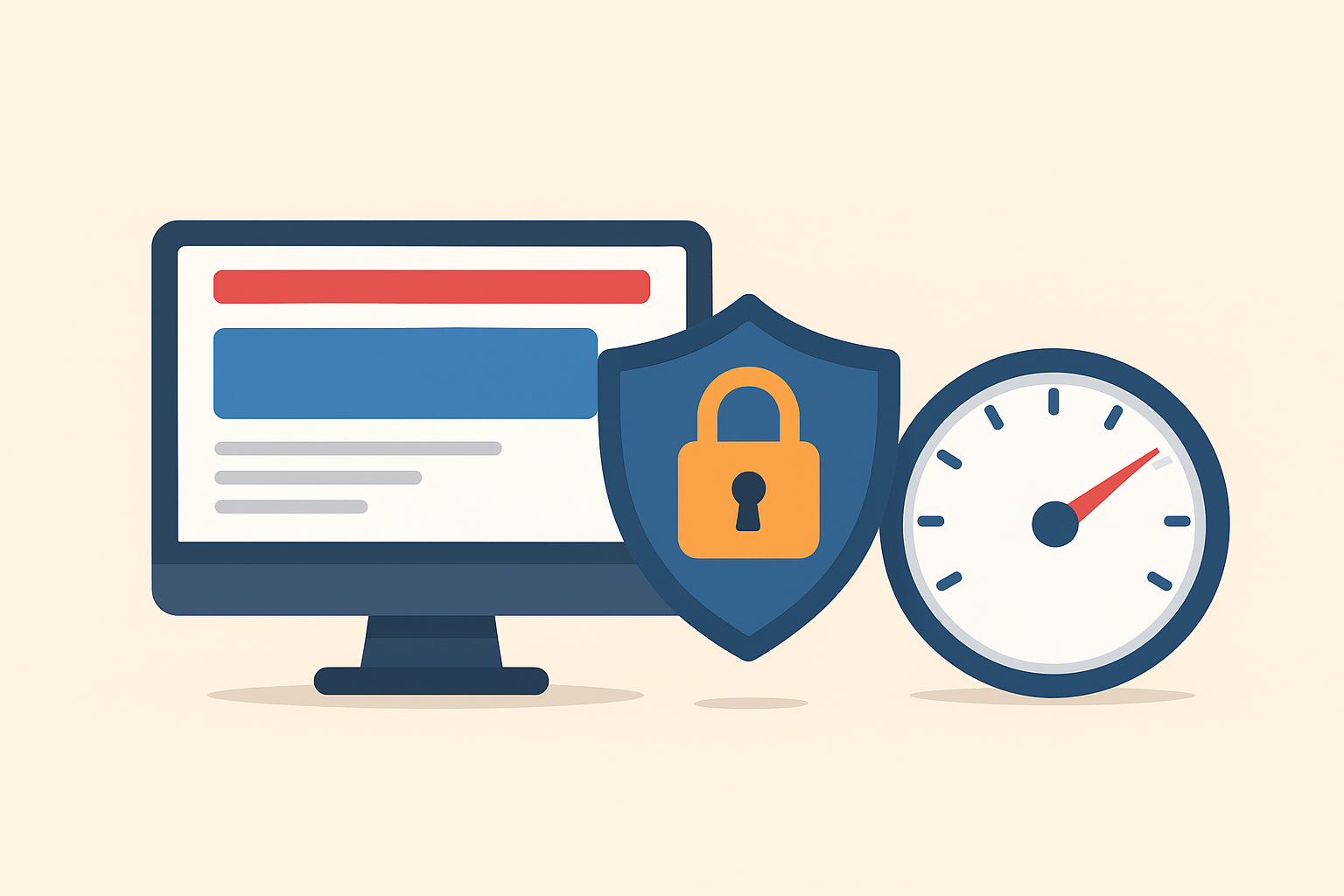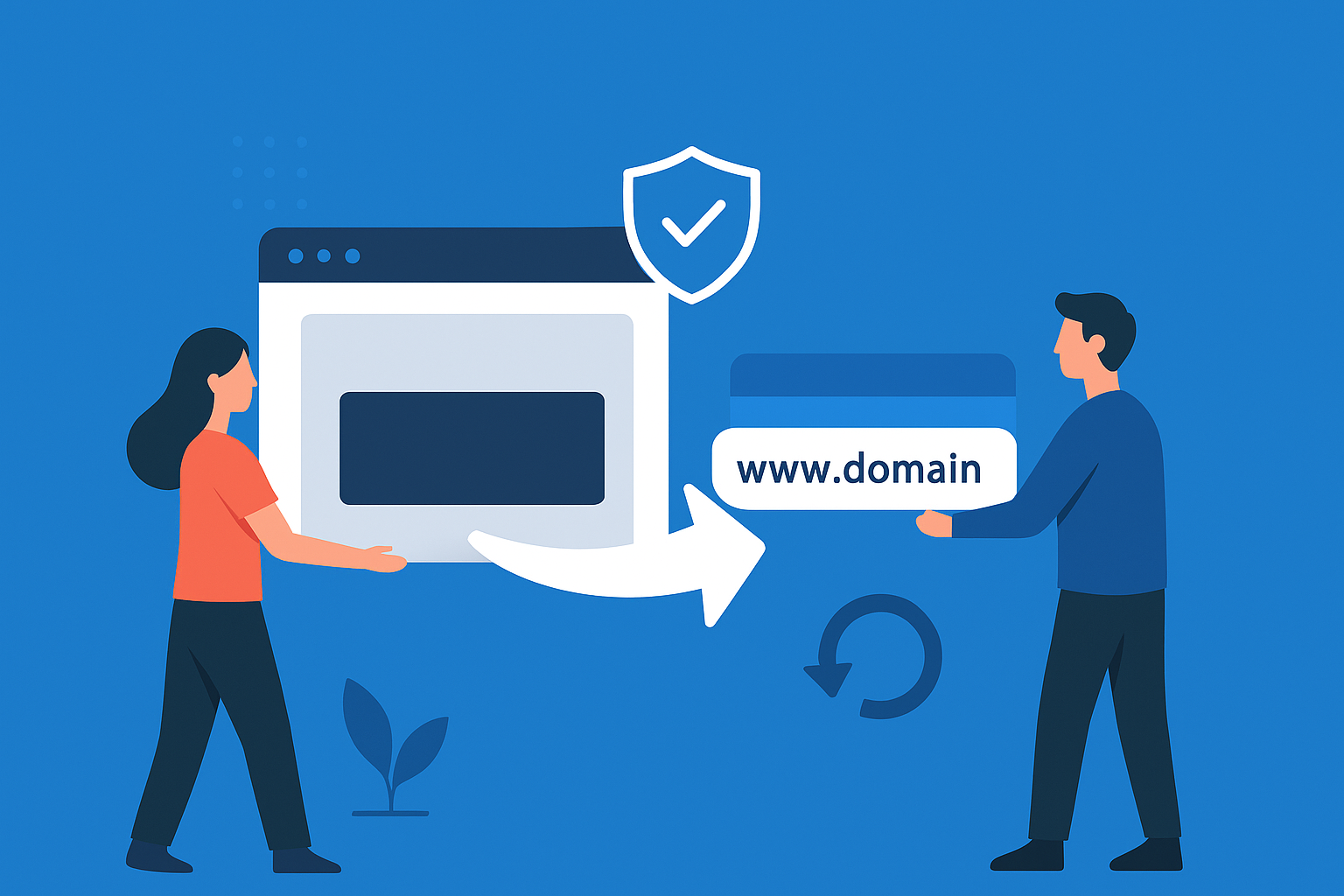Enhance your online presence with Website Speed and Security Optimization. Learn how to secure your website, boost performance, and provide a seamless user experience while protecting against threats.
Introduction: Elevate Your Website with FixHackedSite
In today’s digital age, having a fast and secure website is no longer optional—it’s essential. Every second of delay in page load can lead to lost visitors, reduced engagement, and ultimately, lower conversions. Similarly, security breaches can damage your brand reputation and put your business at risk. At FixHackedSite, we specialize in providing comprehensive solutions for Website Speed and Security Optimization, helping businesses achieve seamless performance and robust protection. In this post, we will explore the most effective strategies and best practices to optimize your website’s speed while ensuring it remains secure from potential threats.
A website that is slow or insecure can severely impact user experience and search engine rankings. Visitors today expect websites to load almost instantaneously, and search engines like Google reward websites that perform efficiently. Security, on the other hand, ensures that sensitive user data, business information, and online transactions are protected from hackers, malware, and other vulnerabilities. This guide will provide an in-depth understanding of the techniques and tools necessary to achieve both speed and security optimization.
Whether you are a small business owner, a blogger, or running a large e-commerce site, Website Speed and Security Optimization is critical for success. Implementing these strategies ensures faster load times, improved search engine rankings, and a trustworthy online presence. By combining speed enhancements with strong security measures, you create a website that not only performs efficiently but also instills confidence in your visitors.
Understanding Website Performance Metrics
Website Speed and Security Optimization is more than just how fast a site loads. It encompasses multiple metrics, including page load time, server response time, and overall user experience. Page load time measures the duration it takes for a page to display fully on a user’s browser. Server response time indicates how quickly a server processes requests, while overall user experience considers usability, navigation, and accessibility. When you focus on Website Speed and Security Optimization, you ensure every component of your site performs efficiently and securely.
Optimizing website performance begins with a thorough assessment of these metrics. Tools like Google PageSpeed Insights, GTmetrix, and Pingdom provide actionable insights into Website Speed and Security Optimization results. They highlight areas that require improvement, such as image optimization, code minification, and caching. Understanding these metrics helps prioritize optimization efforts and ensures that improvements deliver measurable results while keeping your website safe from performance-related vulnerabilities.
Investing in Website Speed and Security Optimization not only improves user experience but also positively impacts search engine rankings. Search engines favor websites that load quickly and provide smooth navigation, signaling to users that your website is reliable and trustworthy. By continuously monitoring and optimizing performance metrics through consistent Website Speed and Security Optimization practices, you can maintain a website that meets user expectations and business goals.
The Importance of Website Speed
Website speed is a critical factor in retaining visitors and driving conversions. Research indicates that a delay of even a single second in page load can significantly reduce engagement and revenue. Fast-loading websites provide a better user experience, increase retention rates, and encourage users to explore more pages.
 Speed also affects search engine rankings. Google and other search engines prioritize websites that load quickly, as they provide a better experience for users. A slow website may rank lower in search results, reducing visibility and traffic. Therefore, optimizing website speed is not just about user satisfaction—it’s also a strategic move for improving online presence and competitiveness.
Speed also affects search engine rankings. Google and other search engines prioritize websites that load quickly, as they provide a better experience for users. A slow website may rank lower in search results, reducing visibility and traffic. Therefore, optimizing website speed is not just about user satisfaction—it’s also a strategic move for improving online presence and competitiveness.
Several factors influence website speed, including server performance, website design, and the size of images and files. Reducing unnecessary plugins, enabling browser caching, and using content delivery networks (CDNs) are effective ways to enhance speed. Implementing these techniques ensures that visitors can access your content quickly, regardless of their location or device.
Key Security Threats to Websites
Website security is essential to protect your online presence from malicious attacks. Common threats include malware, phishing, SQL injection, cross-site scripting (XSS), and distributed denial-of-service (DDoS) attacks. These attacks can compromise sensitive information, disrupt operations, and damage your reputation.
Understanding the nature of these threats is crucial for effective security planning. Malware can infect your website and harm visitors, while phishing attacks trick users into sharing confidential data. SQL injections and XSS attacks exploit vulnerabilities in your website’s code, potentially giving attackers access to sensitive databases. DDoS attacks overwhelm servers, rendering your website inaccessible.
Proactive measures such as regular security audits, firewall implementation, and continuous monitoring can prevent security breaches. By understanding potential threats and taking preventative actions, you can safeguard your website and ensure a secure experience for visitors.
Choosing the Right Hosting for Performance and Security
Selecting the appropriate hosting solution is a foundational step in optimizing website speed and security. Hosting providers impact server response times, uptime, and overall reliability. Shared hosting may be cost-effective but can slow down your website if resources are shared with other sites. On the other hand, VPS or dedicated hosting offers more control and stability.
Security features provided by hosting providers also play a significant role. Look for hosts offering SSL certificates, firewalls, malware scanning, and automatic backups. These features ensure that your website is protected against attacks while maintaining optimal performance. Additionally, hosting locations can influence speed, as servers closer to your target audience reduce latency.
Regularly reviewing your hosting solution and considering upgrades when necessary ensures that your website maintains both speed and security. A reliable hosting provider forms the backbone of a well-optimized website, providing the foundation for all further optimization efforts.
Optimizing Images Without Compromising Quality
Images are often the heaviest elements on a website and can significantly impact load times. Proper image optimization reduces file sizes without compromising visual quality, leading to faster page loads. Techniques include compressing images, using modern formats like WebP, and implementing responsive images for different devices.
Additionally, lazy loading images ensures that they are only loaded when they enter the viewport. This reduces initial load times and enhances user experience. Alt attributes also improve accessibility and contribute to SEO optimization, making images functional and performance-friendly.
Optimized images not only improve speed but also reduce bandwidth consumption, benefiting both your server and users. Combined with other optimization techniques, image management is a vital part of ensuring a fast and visually appealing website.
Leveraging Caching for Faster Load Times
Caching is one of the most effective strategies for enhancing website speed. It involves storing copies of your website’s files in a user’s browser or on intermediate servers, reducing the need to fetch data repeatedly. Browser caching allows frequently accessed files to load instantly, while server-side caching reduces load on the server.
Content delivery networks (CDNs) further enhance caching by distributing static assets across multiple global servers. When a user requests content, it is served from the nearest server, reducing latency and improving load times. Efficient caching strategies ensure consistent performance even during high traffic periods.
Proper caching implementation requires careful configuration. Over-caching dynamic content can lead to outdated information being displayed, while under-caching may fail to deliver speed benefits. Balancing these factors ensures that caching improves performance without compromising website functionality or user experience.
Minimizing HTTP Requests and Code Optimization
Every element on a webpage, from scripts to images, triggers an HTTP request. Reducing the number of requests significantly improves load times. Combining CSS and JavaScript files, removing unnecessary plugins, and using inline code for small scripts are effective strategies.
Code optimization goes hand-in-hand with request minimization. Minifying CSS, JavaScript, and HTML reduces file sizes by removing whitespace and unnecessary characters. Efficient code ensures faster parsing and execution by browsers, contributing to overall website speed.
Regularly reviewing and updating code is essential to maintain optimization. Outdated or poorly structured code can slow down your website, increase server load, and introduce security vulnerabilities. Maintaining clean, optimized code is both a performance and security measure.
Implementing SSL and HTTPS
SSL (Secure Sockets Layer) encrypts data exchanged between a website and its users, providing a secure browsing experience. Websites using HTTPS are protected from eavesdropping and data tampering, ensuring sensitive information remains confidential.
Beyond security, HTTPS is also a ranking factor for search engines. Google prioritizes secure websites in its search results, making SSL essential for both performance perception and SEO benefits. Implementing SSL requires obtaining a certificate and configuring your server properly to enforce HTTPS connections.
Regular monitoring and renewal of SSL certificates are necessary to maintain security and trust. Expired or misconfigured certificates can trigger browser warnings, eroding user confidence and potentially driving traffic away. HTTPS ensures data security while reinforcing credibility and user trust.
Enhancing Website Security with Firewalls
Firewalls act as a barrier between your website and potential threats, filtering malicious traffic and preventing unauthorized access. Web application firewalls (WAFs) are specifically designed to protect websites by blocking attacks like SQL injections, XSS, and DDoS.
Properly configured firewalls can reduce server load, as they prevent malicious requests from reaching your backend systems. Many firewalls also offer real-time monitoring, alerts, and logging, enabling quick responses to potential threats.
Incorporating firewalls as part of a broader security strategy ensures comprehensive protection. Combined with regular updates, monitoring, and other security measures, firewalls are essential for maintaining a secure and reliable online presence.
Regular Software and Plugin Updates
 Outdated software and plugins are common entry points for hackers. Regularly updating your CMS, themes, and plugins ensures that security patches are applied and vulnerabilities are minimized. Ignoring updates can lead to exploits that compromise website integrity.
Outdated software and plugins are common entry points for hackers. Regularly updating your CMS, themes, and plugins ensures that security patches are applied and vulnerabilities are minimized. Ignoring updates can lead to exploits that compromise website integrity.
Updating also contributes to performance. Developers often release updates that improve speed, fix bugs, and optimize resource usage. By maintaining the latest versions, you ensure that your website benefits from these enhancements.
A structured update routine, combined with testing in a staging environment, minimizes the risk of conflicts and downtime. Regular maintenance is a critical aspect of both speed and security optimization.
Monitoring Website Performance and Security
Continuous monitoring allows you to detect performance degradation or security breaches early. Tools like uptime monitors, vulnerability scanners, and analytics dashboards provide insights into load times, traffic patterns, and potential threats.
Monitoring performance metrics helps identify bottlenecks, while security monitoring alerts you to suspicious activity, unauthorized access, or malware infections. Prompt action based on these insights prevents minor issues from escalating into major problems.
Integrating monitoring into your website management routine ensures proactive optimization. By continuously observing both speed and security, you maintain a reliable, fast, and secure online environment for your visitors.
Using Content Delivery Networks (CDNs)
CDNs distribute website content across multiple servers globally, ensuring faster access for users regardless of their location. By serving content from the nearest server, CDNs reduce latency, improve load times, and balance traffic during peak periods.
CDNs also enhance security by mitigating DDoS attacks and providing secure edge servers. They act as an additional protective layer, ensuring that traffic is filtered and distributed efficiently.
Implementing a CDN is especially beneficial for websites with a global audience. It ensures consistent speed, reduces server strain, and enhances overall reliability and user experience.
Optimizing Database Performance
Database efficiency directly impacts website speed. Optimizing queries, indexing tables, and removing unnecessary data reduces load times and server resource usage. Regular database maintenance prevents fragmentation and ensures smooth operation.
Caching frequently accessed queries, limiting database calls, and cleaning up temporary files further improve performance. Efficient database management ensures that dynamic content is delivered quickly, enhancing user experience.
A well-optimized database contributes to both speed and security. By controlling data access and maintaining efficient structures, you reduce vulnerabilities and ensure that your website operates seamlessly.
Reducing Redirects and 404 Errors
Excessive redirects and broken links slow down websites and frustrate visitors. Minimizing redirects ensures that users reach their destination quickly, while fixing 404 errors improves navigation and maintains credibility.
Analyzing website links and implementing proper redirection strategies reduces unnecessary server requests. Permanent redirects (301) are preferable over temporary ones (302) for SEO purposes and improved speed.
Regular auditing of links and redirects ensures that your website remains efficient and user-friendly. Addressing errors proactively enhances both performance and the perception of reliability.
Implementing Secure Authentication and Access Controls
Strong authentication mechanisms protect your website from unauthorized access. Multi-factor authentication (MFA), strong passwords, and role-based access controls limit the risk of breaches.
Access control ensures that only authorized users can modify sensitive content, reducing the potential for accidental or malicious damage. Properly implemented authentication also logs access attempts, providing insights into suspicious activity.
Secure access practices are crucial for protecting both backend systems and user data. By controlling who can access your website and monitoring activities, you maintain a safe environment while supporting efficient operations.
Utilizing Advanced Security Plugins
Security plugins provide automated protection and monitoring for websites. Features like malware scanning, firewall integration, login protection, and backup solutions help maintain security without constant manual intervention.
Advanced plugins often offer real-time alerts, vulnerability assessments, and automated threat mitigation. Selecting reputable and regularly updated plugins ensures compatibility and effectiveness.
Integrating security plugins complements other measures, providing a multi-layered defense strategy. By leveraging these tools, you enhance protection while simplifying website management and maintaining optimal performance.
Optimizing Mobile Performance
With the majority of web traffic coming from mobile devices, Website Speed and Security Optimization plays a crucial role in ensuring a seamless experience. Responsive design, adaptive images, and efficient code are essential elements that allow mobile users to enjoy fast load times and smooth navigation. When properly implemented, Website Speed and Security Optimization ensures that your website performs efficiently across all screen sizes and devices.
 Mobile optimization also has a direct impact on SEO rankings. Search engines now prioritize websites that offer mobile-friendly experiences, which means integrating Website Speed and Security Optimization techniques like accelerated mobile pages (AMP), optimized caching, and lazy loading of images. These improvements not only boost mobile page speed but also enhance overall website security and stability.
Mobile optimization also has a direct impact on SEO rankings. Search engines now prioritize websites that offer mobile-friendly experiences, which means integrating Website Speed and Security Optimization techniques like accelerated mobile pages (AMP), optimized caching, and lazy loading of images. These improvements not only boost mobile page speed but also enhance overall website security and stability.
Ensuring mobile optimization is vital for accessibility, engagement, and retention. By applying Website Speed and Security Optimization strategies to your mobile framework, you attract more visitors, reduce bounce rates, and build user trust. A mobile-optimized website that combines speed with robust security strengthens your brand’s credibility and enhances long-term digital success.
Continuous Improvement and Best Practices
Website optimization is an ongoing process. Regular audits, performance reviews, and security assessments ensure that improvements are maintained and updated according to evolving standards.
Following industry best practices, including clean coding, efficient hosting, and proactive monitoring, establishes a foundation for sustained performance. Continuous improvement ensures that your website adapts to technological changes and user expectations.
By embracing a culture of continuous optimization, you create a website that consistently delivers speed, security, and reliability. This proactive approach supports long-term success and enhances both user experience and business growth.
Conclusion: Achieve Seamless Performance with FixHackedSite
Optimizing your website for speed and security is a critical investment for online success. A fast-loading, secure website enhances user experience, improves search engine rankings, and protects against threats. At FixHackedSite, we help businesses implement effective strategies for Website Speed and Security Optimization, ensuring a reliable and engaging online presence.
By applying the techniques outlined in this guide—ranging from image optimization and caching to advanced security measures—you can create a website that meets the demands of modern users. Continuous monitoring, regular updates, and adherence to best practices maintain performance and security over time.
Investing in website optimization today guarantees a faster, safer, and more professional online presence tomorrow. With FixHackedSite, you can achieve a seamless digital experience that builds trust, drives conversions, and supports long-term growth.


